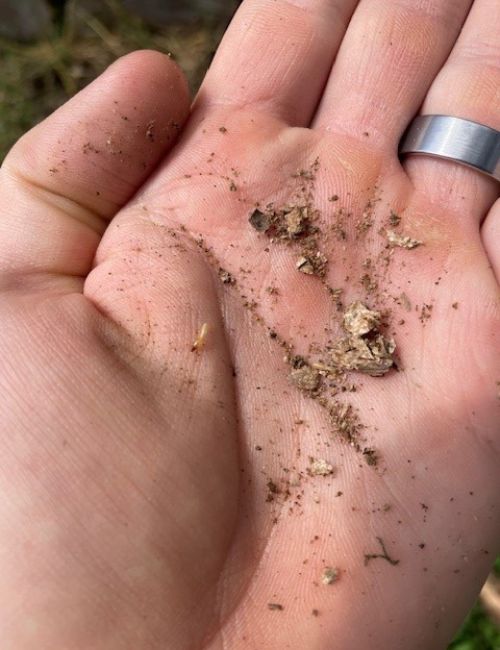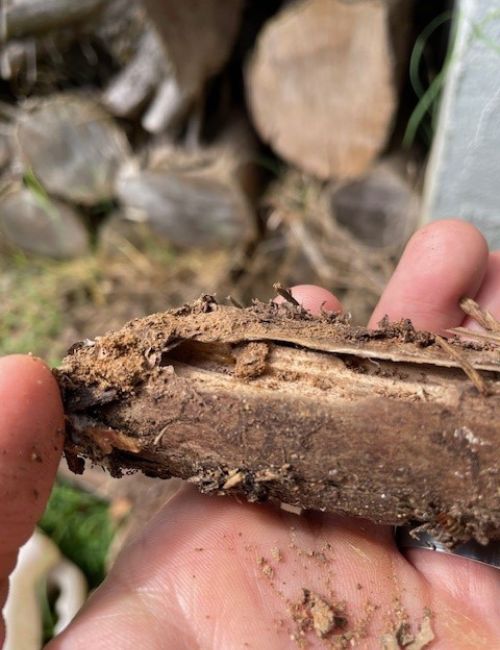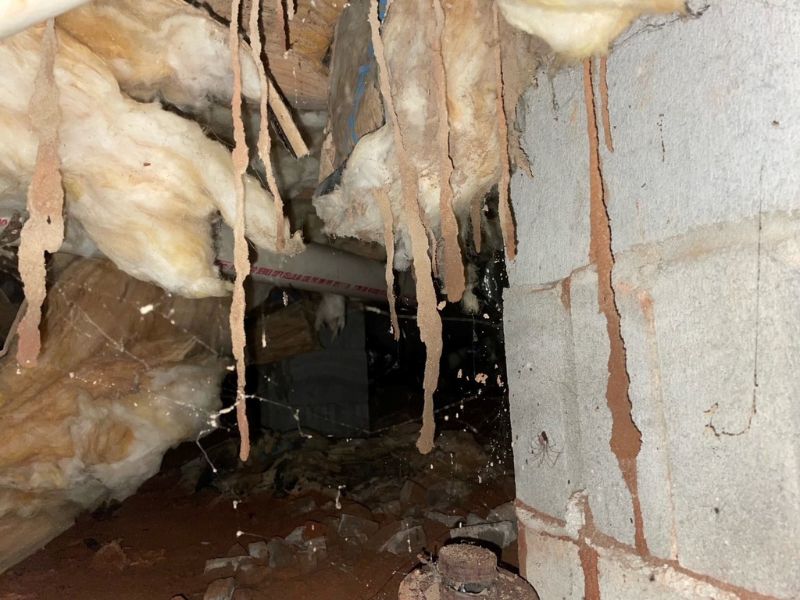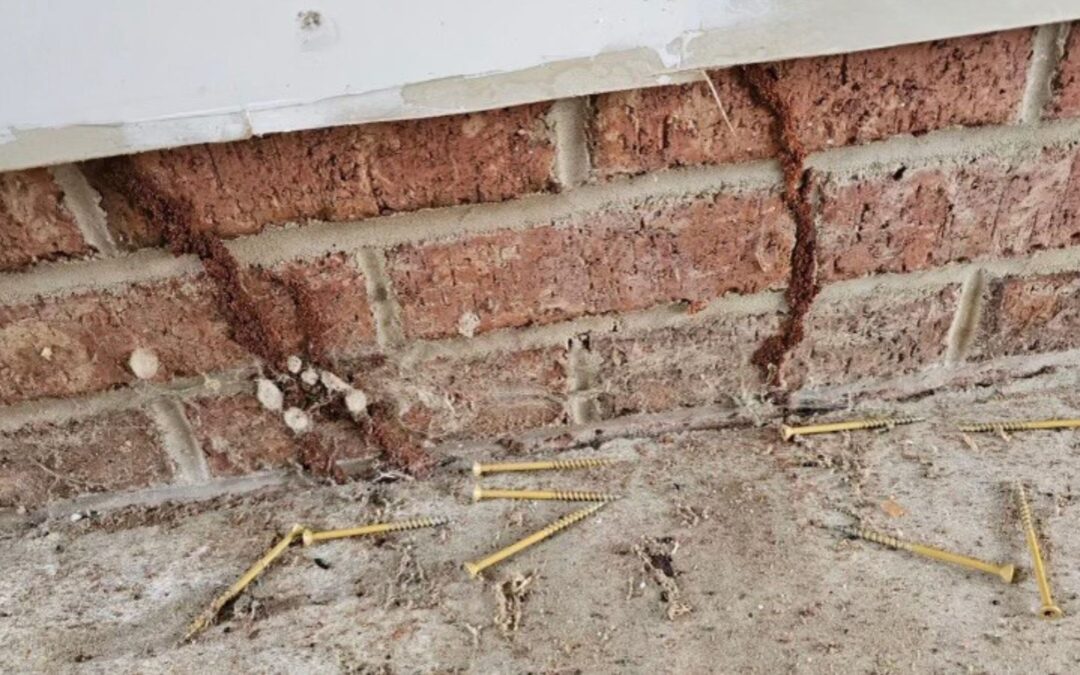How to Identify Termite Damage and Prevent Infestations:
The Real Reason Homeowner’s Insurance Won’t Cover Termite Damage Repairs
Subterranean termites, the most prominent and destructive strain of the wood-eating insect in the United States, are a silent threat lurking beneath the earth’s surface.
These invasive, viscous insects inflict an estimated $5 billion in damages to U.S. homes and buildings each year. They work silently in mass numbers, often unnoticed, as they feast on your biggest financial purchase: your home.
And by the time homeowners detect signs of an infestation, such as mud shelter tubes weaving along the crawl-space foundation, or weakened floor joists and support beams, it may already be too late.
Fun Fact: If you gathered every termite in one place, the collection would weigh 450 million tons. That’s 100 million tons heavier than the global human population.
What do termites look like?
Subterranean termites look like grains of rice, but with legs. They sport thin abdomens and straight antennae. Commonly mistaken for ants, termites do more damage each year than any insect on earth.
For further reading: How to distinguish ants from termites
Termites are social insects, meaning that they operate in a large group setting. A mature colony of Eastern subterranean termites range from 50,000 to hundreds of thousands. The colony is divided into workers, solders, and swarmers.


What does termite damage look like?
The destruction termites cause can be widespread, staggeringly expensive, and could threaten unrecoverable damage to your residence or business.
Termites can reduce your home’s once-sturdy wooden framework into a fragile Styrofoam-like material. Excessive damage over the years may cause your floors to cave at the weight of furniture, appliances, and activity.
Termite damage can be difficult to detect, but there are several warning signs for homeowners to consider:
- Hollow wood. Termites slowly eat wood from the inside out. Hollow wood carries a distinct sound when hit with a flashlight or screwdriver, and it will typically break easily if punctured.
- Mud shelter tubes along your home’s foundation, crawl space beams and joists. A strong indicator that termites are on the move.
- Sagging floors. If your house has reached this point, you may be facing tens of thousands of dollars for structural repairs.

Does my homeowner’s insurance cover termite damage?
Because termite infestations are gradual and preventable (unlike floods, tornados, fires, and theft), homeowner’s insurance policies typically don’t cover termite damage or other insect-related destruction.
Instead, homeowners are responsible, and encouraged, to initiate preventative measures to guard their structures.
Such measures include:
- Scheduling annual termite inspections
- Maintaining proper moisture and drainage control, such as installing a plastic vapor barrier and dehumidifier in your home’s crawl space)
- Addressing wood-to-soil contact areas around your home
- Contracting a certified technician to treat your home’s perimeter for termites
Taking these calculated measures could greatly mitigate termite infestations.
Fun Fact: Termites eventually will, if not treated and controlled, eat through every wooden structure in the Southeast. It’s not a matter of if, but when.
The costly consequences of unaddressed termites can be severe. Don’t let your residence turn into a feast for unwelcomed insects. Don’t wait for a termite infestation before you treat! Treatments typically protect your home for 10 years or longer.
Struggling with these invasive pests already? Stop them before more damage ensues.
Wanting to guard your home or business against inevitability? Let Compass Pest Management provide a free inspection and estimate, so you can have peace of mind for years.
Scheduling your first termite inspection
At Compass Pest Management, we not only provide free estimates. But also, free inspections!
A certified technician at Compass Pest Management can detect termite activity, identify your wood moisture content, analyze any structural susceptibility, and recommend the best treatment plan for your needs.
In addition to its inspection, estimate, and treatment services, Compass Pest Management covers up to $1 million in damages if termites still cause damage. With Compass Pest Management, you can have peace of mind knowing you never have to worry about termites again.

